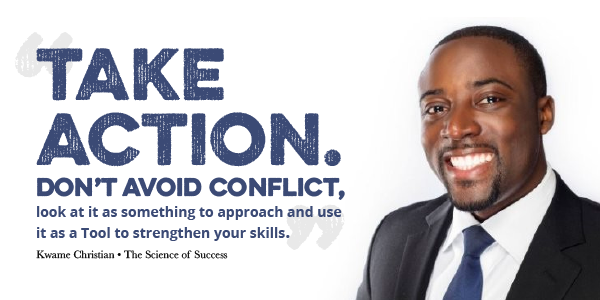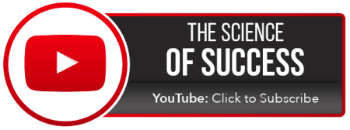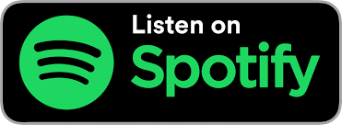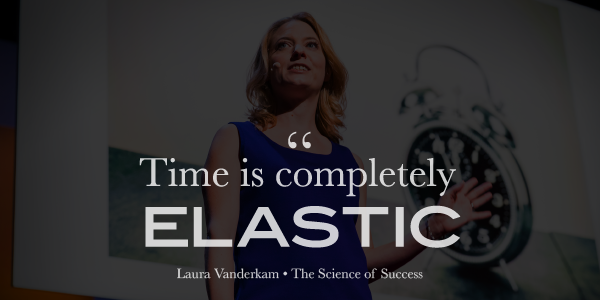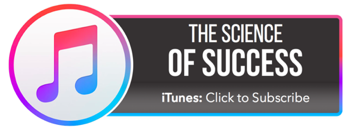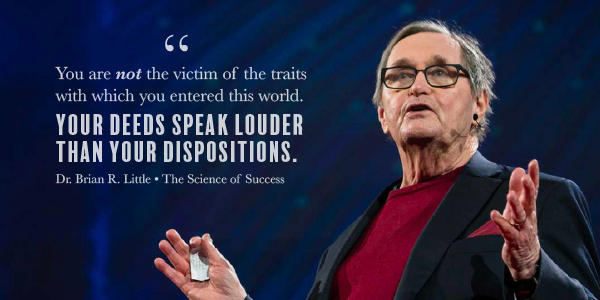Are You Ready To Spend More Time On What You LOVE? A Conversation with Gay Hendricks
In this episode we explore how to unleash and live in your genius. How do you discover what your genius is? How can you spend more and more of your time doing what you love? We discuss how you can unlock the incredible potential within yourself and avoid the traps that may stop you from getting there. We share the lessons learned from working with more than 20,000 people to help them on their own journeys to genius - and give you the exact strategies and tactics to create a positive upward spiral of genius for yourself with our guest Dr. Gay Hendricks.
Dr. Gay Hendricks is the president of the Hendricks Institute and has been a thought leader in the fields of relationship transformation and body-mind therapies for over 45 years. Gay earned his Ph.D in counseling psychology from Stanford and taught at the University of Colorado for 21 years and has conducted seminars across the globe. He is also a multi-bestselling author, having written more than 40 books most recently The Joy of Genius which was released earlier this year!
The 2 big issues that human beings face
Upper limit problems
Living in your genius
People get used to operating at a certain level of success, happiness, etc - we often trip these fears that cause us to sabotage back to the levels we feel we deserve
Lessons from working with over 20,000 people and 5000 couples
Almost everyone, no matter how successful you are, has a lot of potential left to be developed
We all have remaining potential left on the table in the form of our “Genius"
Many of us get stuck in one of three boxes
Incompetence
Competence
Excellence (the most dangerous)
All of these boxes prevent us from getting to the most important place - the place of Genius
You need to make a commitment to bringing forth your genius. You have absolutely no idea how much potential you have left inside of yourself.
It doesn’t matter how bright you are - it’s about making an inner commitment to bringing your genius out. That inner commitment is the first starting place.
How Gay went from spending 10% of his life doing what he loves - it took him years to get to 30%, years more to get to 50% - until 20 years later he spends 90% of his time doing what he loves
Every time you expand into more and more of what you love to do, it invites and brings in more energy
The first thing you need to do is find out if you’re courageous enough to make a heart felt commitment to living in your zone of genius
Simple Mantra - “I Commit To Bringing Forth My Genius No Matter What It Takes"
Say that to yourself and mean it sincerely
You must find 10 minutes per day committed to finding your genius
Ask yourself in a wondering way - “What is my Genius?"
Genius is addictive and its contagious - the more you do it, the more you want to do it , the more you inspire people with your genius, the more people who get inspired
When you make a commitment to your own genius, you’re starting to inspire others to get in touch with their own genius as well
What is the genius Move? How can you do it ever day?
What’s a Genius Moment? We are confronted with them every day.
A genius moment may look like a problem at the surface, but it’s often actually an invitation to spot your genius
When you come up with something that’s outside your control, that you don’t know how to control
There are some things you can control, and some things you cannot control
What often makes miserable is focusing on things that we don’t have control over whatsoever
None of us have any control whatsoever over the past - the only reason to think about the past is to identify something in this moment that you can do differently
Whenever you are worried about the past or worried about the future - that is an opportunity for genius
Let go of the baggage and radiate into the presence - open up new space for your genius to emerge
True creativity is when you’re expressing your own genius - and when you’re doing it in a way that is inspiring others around you
“All of humanities problems stem from not being able to sit quietly in a room” - Blaise Pascal
Homework: Sit for 10 minutes quietly living with the question of “What is my genius?"
If you already know what your genius is - ask yourself “ How can I bring forth my genius in a way that inspires me and other people I interact with?"
How and why you can use “Wonder questions” to discover your life’s purpose
Thank you so much for listening!
Please SUBSCRIBE and LEAVE US A REVIEW on iTunes! (Click here for instructions on how to do that).
Make a positive impact this giving season!
And let us make it easy and help you do it!
That's why for the rest of 2018, we're proud to be partnering with The Life You Can Save!
For a limited time, we're giving you the chance to win a free $100 donation to The Life You Can Save charity and cause of your choice!
Simply click here or the image above and submit your answer to be instantly entered to win!
The Life You Can Save has a well-curated, compelling list of impactful giving opportunities where your donation will be HIGHLY IMPACTFUL and cost-effective!
Show Notes, Links, & Research
[Book] The Joy of Genius by Gay Hendricks PH.D.
[Website] Hendricks Institute
[SoS Episode] How You Can CRUSH Self Sabotage with Dr. Gay Hendricks
Episode Transcript
[00:00:19.4] ANNOUNCER: Welcome to The Science of Success. Introducing your host, Matt Bodnar. [0:00:11.8] MB: Welcome to the Science of Success; the number one evidence-based growth podcast on the internet with more than three million downloads, listeners in over a hundred countries. In this episode, we explore how to unleash and live in your genius. How do you discover what your genius is? How can you spend more and more of your time doing what you love? We discuss how you can unlock the incredible potential within yourself and avoid the traps that may stop you from getting there. We share lessons learned from working with more than 20,000 people to help them on their own journeys to genius and give you the exact strategies and tactics to create a positive upward spiral of genius for yourself with our guest, Dr. Gay Hendricks. Do you need more time? Time for work, time for thinking and reading, time for the people in your life, time to accomplish your goals? This was the number one problem our listeners outlined and we created a new video guide that you can get completely for free when you sign up and join our e-mail list. It’s called How You Can Create Time for the Things That Really Matter in Life. You can get it completely for free when you sign up and join the e-mail list at successpodcast.com. You're also going to get exclusive content that's only available to our e-mail subscribers. We recently pre released an episode in an interview to our e-mail subscribers a week before it went live to our broader audience. That had tremendous implications, because there is a limited offer in there with only 50 available spots that got eaten up by the people who were on the e-mail list first. With that same interview, we also offered an exclusive opportunity for people on our e-mail list to engage one-on-one for over an hour with one of our guests in a live exclusive interview just for e-mail subscribers. There's some amazing stuff that's available only to e-mail subscribers that's only going on if you subscribe and sign up to the e-mail list. You can do that by going to successpodcast.com and signing up right on the home page. Or if you're driving around right now, if you're out and about and you're on the go, you don't have time, just text the word “smarter” to the number 44-222. That’s S-M-A-R-T-E-R to the number 44-222. In our previous episode, we explored how you can confidently be yourself even if you're afraid what other people may do or think. We discussed how your obsession with niceness and people-pleasing is often a problem and shared specific strategies you can use to overcome it. We talked about the power and importance of saying no and the right way to do it, so that you can move away from approval seeking and step into bold authenticity with our previous guest, Dr. Aziz Gazipura. If you want to stop being afraid to be yourself, listen to our previous episode. Now for our interview with Dr. Hendricks. [0:03:03.2] MB: Today, we have another incredible guest back on the show, Dr. Gay Hendricks. Gay is the President of the Hendricks Institute and has been a thought leader in the fields of relationship, transformation and body mind therapies for over 45 years. He earned his PhD in counseling psychology from Stanford and taught at the University of Colorado for 21 years. He's conducted seminars across the globe and is a multi-bestselling author of over 40 books, most recently of which is The Joy of Genius. Gay welcome back to the Science of Success. [0:03:31.4] GH: Thanks a lot Matt. It's really great to be back with you and your audience. [0:03:35.3] MB: Well, we really enjoyed the conversation the first time around and obviously you've got this new book coming out, which is the sequel to The Big Leap, which is a phenomenal book and really transformational book personally for me. I'd love to start with just rehashing some of the key themes and ideas, because what you write about in Joy of Genius really builds on the work from Big Leap. Tell me a little bit about the core ideas around Big Leap and this notion of upper limit problems and how we often self-sabotage and reset our happiness. [0:04:05.2] GH: Yes. Well, The Big Leap is really about two big issues that human beings face. One of them, I gave the name for it many years ago. I started calling it the upper limit problem. What happens is that people get used to operating at a certain level of success, or a certain level of feeling good, or a certain level of flow of intimacy in their relationships. Then upper limits come up where certain fears get triggered inside ourselves and cause us to sabotage ourselves and bring us back down to a more familiar level. That's one thing The Big Leap is all about is how to spot your upper limit problems and how to handle those four or five key fears that are underneath the upper limit problem. For example, many people as they get more successful, they trip an old fear inside of feeling unworthy, or low self-esteem and that causes them then to sabotage themselves. Other people trip a fear of outshining other people and that causes the upper limit problem to fall into place on them. The Big Leap is about the upper limit problem. It's also about genius and what I then called the zone of genius, I now call it the genius spiral in the new book. Because I began to feel that zone is a little limiting in itself and that it applies that it's an enclosed space. I decided to come up with a new image and I call it now the genius spiral. I'll explain that in a moment, but genius is all about finding out what you most love to do inside. It also coincides with what you are most productive and contributive with. What I've found from working with people over the years, I think we've worked with about 20,000 people now in our seminars and about 4 or 5,000 couples in our relationship seminars, what we found is that almost everyone, no matter how successful you are, has still a lot of potential left to be developed. I've worked with some of the best executives, I used to consult with the top team at Dell computer and I've worked with all sorts of different very bright people and I've never met one including myself that didn't have some remaining potential they were leaving on the table in the form of their genius. What happens is that many of us get stuck in one of three boxes. One is the incompetence box, where you're doing things that you're not very good at and complaining about it a lot. Number two is the competence box, where you're doing things that you're pretty good at but somebody else could do them just as well. The third box that people, especially very bright capable people get stuck in is the excellence box where you're doing things that you're really good at and you get good feedback at and probably make good money at too, but it's not really what you want to be doing down in your heart and soul. What I say is that human beings need to make a commitment to bringing forth their genius, because people I've worked with, including myself and my wife and others right around us here come back later and think, “Wow, I had no idea I was leaving so much of my potential on the table unexpressed.” Once you begin to look for and express your genius, I say you have absolutely no idea what miracles you can contribute in your life. The new book, The Joy of Genius builds on The Big Leap, because it's about soaring higher and higher on the genius spiral. It has its own set of moves and ideas in it, including the one you mentioned the genius move. I want to spend time talking to you about those kinds of things, but I wanted to give a little background in The Big Leap first. [0:08:06.6] MB: What a great idea. I love this concept that even the most successful people have potential left on the table. [0:08:14.5] GH: Yes, absolutely. In fact when I started thinking about this, I always tell people when they ask me how long did it take to write The Big Leap? I said, “Well, I thought about it for 30 years and then it took about a year to write it.” In thinking about it in the 30 years before I wrote The Big Leap, I discovered first of all in myself that I was only spending about 10% of my work time doing things I really love to do. Here I was. I was a PhD from Stanford, so I oughta have known better. That's why I say it doesn't matter how bright you are, or how many PhDs are MDS or anything you have, it's all about making an inner commitment first of all, to bringing forth your genius. When I first started thinking about it I said, “Wow, I'm leaving 90% of my potential on the table.” I began to first of all, make a commitment to it and then choose activities in my life that were based on things I love to do. My first goal, I just wanted to get from 10% up to maybe where I was spending a third of my time doing things I really loved to do. It took me a while to get there. I'm not saying this is an overnight thing. This sometimes takes – it took me a couple of years to get from 10% up to 30% of my time. Then it took me a couple more years to get up to 50% of my time. After a few years I realized, “Hey, I'm spending half my time doing things I love to do. The rest of my time I'm spending time doing things I have to do, or promise somebody I’d do. They're not necessarily my genius, but I'm spending time on them.” I set the goal of doing 70% of my time in my zone of genius on the genius spiral. That took me a little while longer. Now for the past 20 years or so, I spend 90% of my time doing what I most love to do, including what you and I are doing right now, Matt. I really enjoy, even though I've done hundreds and hundreds of interviews, every single one of them is a new opportunity for me to help people understand how to invite forth their genius. I can tell you from having lived my life over the past many years, there's nothing more satisfying than accessing your own genius and also inspiring the genius of people around you. To me, that's life at its best and that's what I want everybody that reads the joy of genius to learn how to do. [0:10:42.8] MB: You bring up another really important conclusion in that story, and it's the idea that this is not a quick fix. It's not an overnight thing. It's about a slow building up of that genius muscle. I mean, I think it's such a great image. It took you years to go from 10% of your time in your place of genius to 30% of your time and years more to get to 50%. For people listening, you think that you're going to get this magic answer that's going to instantly snap you into living your best life all the time, but the reality is it takes a lot of energy, it takes a lot of presence, it takes a lot of focus to every single day just expand and expand and expand and it's hard work. [0:11:21.0] GH: Yeah. It's essential work. Though it took me a while, but it wasn't really hard in the sense that every time I expanded into doing more and more of what I most loved to do, it invites up more energy. Every time you make a bigger commitment to your genius, you get a bigger wave of energy that you can ride, so life always gives us exactly what we need. A lot of times, we're leaving on the table what we really want. What I really want people to do first and foremost is find out if they're courageous enough to make an actual heartfelt inner commitment to bringing forth their genius. In The Joy of Genius, the new book I give some specific ways you can do that, but let me just give you a simple example, a 10 second example. It only takes 10 seconds to say to yourself, “I commit to bringing forth my genius, no matter what it takes.” I think it takes that commitment to doing it. You need to do whatever it takes to bring forth your genius. If you just said that simple sentence to yourself and meant it sincerely, “I commit to bringing forth my genius, no matter what it takes,” that simple commitment gets you into the game. Even when we're working with super top-of-the-line Fortune 50 executives, we always start the same way. We ask them to make a commitment to bringing forth their genius. Then we ask them to make a commitment to spending at first 10 minutes a day focusing on it. No matter how busy somebody is, they can always find 10 minutes a day. Sometimes if people don't know what their genius is, we ask them to simply go in a room for 10 minutes and ask the question in a wondering way, “Hmm, what is my genius?” Take a notepad in and just jot down things that come forth. You might have to ask that a dozen times before anything comes. Even if you spent the whole 10 minutes just saying, “Hmm, what really is my genius?” That would be valuable time spent, because you would be opening up to a very essential question that all of us need to answer. If I may tell a quick story, my wife and I actually while we're doing this interview this month, we're having our 37th wedding anniversary this month. We've been married – we got married in Colorado and at our wedding which was up on the top of a mountain, in the middle of us saying our wedding vows, two beautiful hawks came way up in the sky above us and circled around and around riding wind currents up into the sky, higher and higher. It were such a beautiful metaphor that we actually got a picture of it on our wedding day and we think about that oftentimes and I think about that a lot when I was writing The Joy of Genius, because that's where I got the original idea for the genius spiral. I noticed that those hawks as they were soaring higher and higher riding the wind currents and going around and around in this spiral, they were doing it absolutely effortlessly. They weren't working hard at it. They weren't flapping their wings wildly or anything. They were just making these little subtle adjustments that allowed them to ride higher and higher on the wind currents. I thought, “What a beautiful metaphor for how your exploration of genius can go, that it doesn't really need to be hard painful work. It's just a matter of committing to it and then staying in the flow of it.” We ask people to begin with the 10-minute exercise, but what we know is that that 10 minutes is going to soon be 20 minutes. Because genius is addictive and it's contagious, the more you do of your genius, the more you want to do of your genius. The more you inspire other people with your genius, the more people get inspired. When I first started, I talked about these ideas first with a little group of six professionals and executives. From that, grew another group of 30 of them. After a while, I was talking to 500 people at a time about the upper limit problem and the genius spiral. Then it spiraled out to a few million people after I wrote The Big Leap. What I'm telling people is that when you make a commitment to your own genius, you're also beginning a process that inspires people around you to be more in touch with their genius. That to me is the real joy of genius is when you feel it inside and you see it on the faces of the people that you inspire. [0:16:13.5] MB: I'm so excited to tell you about our sponsor for this holiday season, the incredible organization The Life You Can Save. I'm sure you get overwhelmed by the countless giving opportunities out there. You feel confused, frustrated and unsure about what the best thing to do is. When that happens, you often end up making scattered donations to a smattering of random charities with no idea of the real impact you're creating on people's lives. That's why I love The Life You Can Save. You know the focus of the Science of Success is on being evidence-based. The beautiful thing about The Life You Can Save is that they focus on evidence-based giving, finding, selecting and curating the most high-impact donation opportunities, so that you don't have to do all that hard work. You can start giving right now by visiting ww.thelifeyoucansave.org/success. That's thelifeyoucansave.org/success. They've already done the homework and they have an incredible, well-curated compelling list of hugely impactful giving opportunities where your donation will be high leverage and cost effective. Our hearts, relationships and networks often guide our giving. The resulting donations usually do some good, but rarely as much as we like them to do. The Life You Can Save makes it so that you can easily navigate how to make your charitable giving go much, much further. While you may not be as wealthy or successful as Bill Gates, yet you can still have an enormous impact on the lives of people living in extreme poverty. They can experience dramatic improvements in their lives for much smaller donations. Visit thelifeyoucansave.org/success to find out more and make rational evidence-based charitable gifts this holiday season. [0:18:24.5] MB: How does this relate to what you've called the genius move? [0:18:28.5] GH: Yes. Well, the genius move is something that happened, that you have the opportunity to do throughout the day. In The Joy of Genius, I describe what I call the genius moment. If you think about it, we're confronted with genius moments throughout the day and the genius move is what you do in that moment. Let me tell you how to spot a genius moment first; a genius moment may look like a problem on the surface, but what it really is is an invitation to calling forth your genius. Here's a quick way to spot a genius moment; it's when you come up against something that is outside your control, that you don't know how to control. You probably know in the 12-step world and places like that, there's a tremendous emphasis on letting go of focusing on things that you don't have any control over and opening up to the real magic of the present moment. I want to give you a quotation from somebody from 2,000 years ago. There was a great philosopher named Epictetus. The first line of his book says it all. I quote this in The Joy of Genius. Epictetus said, “The secret of happiness is knowing that there are some things you can control and some things you cannot.” If you think of the moments that go by during your day, a lot of the things that make us miserable is when we lock in and start obsessively thinking about things that we don't have any control over whatsoever. I've worked with so many people that get all caught up in their minds about what other people think of them. If you think about it for a moment, none of us have any ability to control what other people think of us. It's a total wasted use of our mental abilities to obsess about that. Whereas, if you bring yourself into the present, into right now, there is probable something that you could do that's positive that would make people think well of you. A lot of us don't get around to that, because we get all consumed with the activity in our mind and thinking about all the people we have to be responsible to, jamming up our minds with a real traffic jam of thoughts about things that we don't have any control over. Or here's another classic example; we work with people all the time here who are caught up with something that happened in their past. They can't let go of something that happened before; some bad thing they did, or some unpleasant event that happened, or some very painful event from early in their life. If you think about for a moment, you realize that none of us have any control whatsoever over the past. There's only one reason to think about the past and that's to identify something in this moment that you can do differently. For example, if you're caught up in thinking about some relationship that was painful that happened some years ago, even if the person is dead, not even living, what we do here is we have people take an action in the present that gets them out of the past. For example, there was a person once that I realized one day that I still owed some money to, a $160 to then I borrowed from this person to complete my graduate program at the University of New Hampshire in 1968. Then I got mad that this person. We got into a hassle and I ended up quitting my job. I guess, I used unconsciously the excuse that I was mad at him as an excuse not to pay him back. Some years later, that came into my mind and I said, “Wait a minute, that's an incompletion. I still owe him – I owe him more money now if I include a little interest.” I'm using in my mind the fact that I was angry at him to not keep an agreement that I made. I realized, that's such an unhappy making thing to do. I got in touch with him and tracked him down. He was living 3,000 miles away by then, but tracked him down and was able to pay him money back and his money back and a little extra. I really, at that moment, I felt a relaxation inside that I'd never really felt before. That's an example of how to do something in the present that completes the past. Whenever you find yourself thinking about the past, or worried about the future, that is a genius moment. Because in that moment, if you can use the genius move from The Joy of Genius, where I show you how to let go of all of that and radiate and illuminate the present to open into that beautiful big space of the present, the moment you learn how to do that with the genius move, you open up new space for your true genius to emerge. When you're not caught up in thinking about the past, or not caught up and worried about the future, you will be amazed at how much genius, how much natural genius you have access to in that big open space called the present. What I try to do in The Joy of Genius is I wrote the book, so it's like just you sitting here in my office with me. If you buy the audiobook, particularly it's really like me talking to you in your ear. If you get the electronic book, you can always turn on the whisper sync and hear the audio in the background. I'm very interested in creating the atmosphere in the book that people have here in my office. That's the value of The Joy of Genius. It gives you that real intimate approach where you can bring forth your genius in the quiet of yourself and by doing that, begin to inspire people around you in a way that maybe you've never inspired them before. [0:24:43.9] MB: I think that's a great example and really provides a meaningful way to think about that in any moment when you're encountering a problem. How can you open yourself up to the present and really let your genius flow into that? [0:24:55.6] GH: Yeah, it's absolutely crucial, because the thing is that I think if you look down inside yourself you personally, as well as folks that are listening to the podcast, if you check down in yourself, I bet you'll find as I did that there's a way you're never going to be quite satisfied in life, unless you're bringing forth your true genius. I make a distinction in The Joy of Genius between ordinary creativity and true creativity. True creativity is when you're expressing your own genius and you're doing it in a way that inspires other people around you. That's the difference between true creativity and ordinary creativity. Ordinary creativity is when you're using your creativity to meet somebody else's goals, like through a regular job. You need to bring your creativity to it, but in a way you can't feel ultimately good about that because it's not your own creativity that you're using to develop your own life. I want people to have that intimate conversation with yourself. There's a great philosopher 400 years ago, I think, now named Blaise Pascal. Blaise Pascal, I don't know too much about him, but I wrote down one thing that he said which just knocked my socks off some years ago. Here's the gist of what he said, he said, “All of humanity's problems stem from not being able to sit in a room by ourselves for 10 minutes doing nothing.” I thought that was such a genius statement, because if you think about it, what most of us need is a good 10 minutes a day of deep communion with who we really are and what we really want to bring forth into the world? What is my specific individual genius? What are my unique abilities? What do I love to do more than anything in the world? As we begin to bring those forth, as you begin to invite that out into the world, it's just like miracles start to happen all around you. I wouldn't have been able to say this 30 or 40 years ago, because it felt I was breaking new ground in myself. When I started seeing the results around me, when I started working with executives and telling them about my journey and inviting them to open up to their true creativity and their true genius, it turned on lights in a lot of people that they had never experienced before. That ultimately led me to write The Big Leap. What I've been working on in the nine years since The Big Leap came out was The Joy of Genius and how to put this thing called the genius move and the genius moment into something where people could actually hold this little book in their hand. When I say little yeah, I think it may be one of the shortest books I've ever read. It's only a 120 or 30 pages. You can literally read it on an airplane trip, like I got an e-mail yesterday from a guy executive back east who'd said he'd read it on the trip from Chicago back home to New York. He said, “I cannot write this down. I have to write you this fan letter.” He sat down in the airport when he got there and wrote this e-mail. That's exactly what I want for the book is if you give it even 10 minutes and read the first chapter, I predict it's going to change your whole thinking about who you are and what your genius is. Then give it another hour, the commuter time from Chicago to New York, or New York to Washington, or LA to San Francisco, or Austin to Dallas and get that book out and just commit those commitments to memory that I give you in the book. They will really save your bacon on more than one occasion when times get tough. I consider it my own personal handbook for healthy conscious living. It's the last one of these type of books I intend to write, because it really has everything I really think it's important to say about human transformation in it. I really invite everybody to take it and make it theirs. I appreciate you Matt for bringing forth what you're doing, because I appreciate the work that you do on helping people bring forth their genius every week through your – I've seen other people that you talk to and other conversations you have, and I really want to appreciate you for the quality of the conversations you're bringing into the world. You're obviously operating on the genius spiral yourself. [0:29:40.2] MB: You're very kind. You're very kind. It's people like you helped me along my own journey of thinking about how I can tackle up or limit problems and try to bring forth my genius more frequently. [0:29:51.9] GH: Well good. It's been a real pleasure talking to you. I would love to come back on sometime after the book’s been out for a few months and have everybody that's read it join us again and we'll go a little bit deeper on it. [0:30:03.8] MB: Awesome. Well, I know you're short on time and you have to run. For one quick final question, what would be one action item you'd give to listeners other than checking out the book, as a piece of homework they could do to start bringing forth their genius? [0:30:17.5] GH: I'll give you the same assignment I've given to billionaires here in my office or their offices, which is let's sit together for 10 minutes first. Just living in the question of what is my genius? If you already have a sense of what your genius is, ask another question, which is how can I bring forth my genius in ways that inspire me and people I interact with? How can I bring forth my genius in a way that inspires me and other people I interact with? Take 10 minutes. Let's take Blaise Pascal's advice and go in a room by yourself, or with a coach for 10 minutes and just spend time asking that question. What we call them are wonder questions, because you're not trying to beat yourself up with the question like – you're not saying, “Oh, why can't I think about my genius?” You ask it in a wonder sense, “Hmm, what is my genius and how can I best bring it forth?” [0:31:17.7] MB: Well, thank you once again for coming on the show. It's great to have you back on here. A huge fan of you and your work and we're so glad that you could join us once again. [0:31:25.3] GH: Thank you very much, Matt. I appreciate you and what you're doing in the world. Thanks to all our – my Big Leap readers and the readers of the new book, I really appreciate you. [0:31:35.1] MB: Thank you so much for listening to the Science of Success. We created this show to help you our listeners master evidence-based growth. I love hearing from listeners. If you want to reach out, share your story, or just say hi, shoot me an e-mail. My e-mail is matt@successpodcast.com. That’s M-A-T-T@successpodcast.com. I’d love to hear from you and I read and respond to every single listener e-mail. I'm going to give you three reasons why you should sign up for our e-mail list today by going to successpodcast.com, signing up right on the homepage. There are some incredible stuff that’s only available to those on the e-mail list, so be sure to sign up, including an exclusive curated weekly e-mail from us called Mindset Monday, which is short, simple, filled with articles, stories, things that we found interesting and fascinating in the world of evidence-based growth in the last week. Next, you're going to get an exclusive chance to shape the show, including voting on guests, submitting your own personal questions that we’ll ask guests on air and much more. Lastly, you’re going to get a free guide we created based on listener demand, our most popular guide, which is called how to organize and remember everything. You can get it completely for free along with another surprise bonus guide by signing up and joining the e-mail list today. Again, you can do that at successpodcast.com, sign up right at the homepage, or if you're on the go, just text the word “smarter”, S-M-A-R-T-E-R to the number 44-222. Remember, the greatest compliment you can give us is a referral to a friend either live or online. If you enjoyed this episode, please leave us an awesome review and subscribe on iTunes because that helps boost the algorithm, that helps us move up the iTunes rankings and helps more people discover the Science of Success. Don't forget, if you want to get all the incredible information we talked about in the show, links transcripts, everything we discussed and much more, be sure to check out our show notes. You can get those at successpodcast.com, just hit the show notes button right at the top. Thanks again, and we'll see you on the next episode of the Science of Success.






























